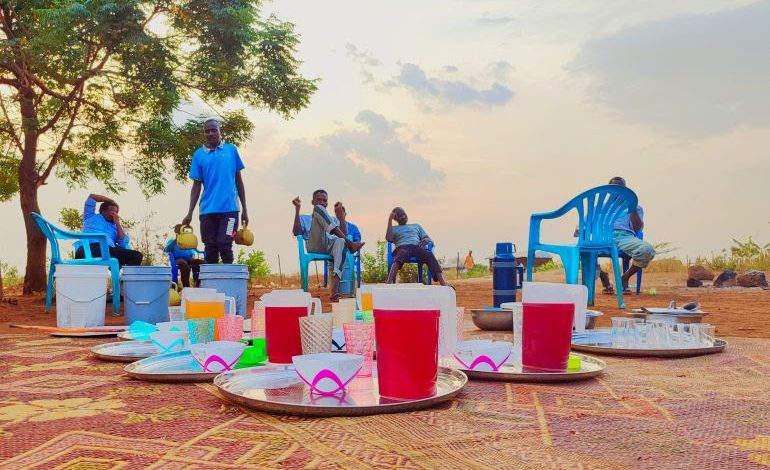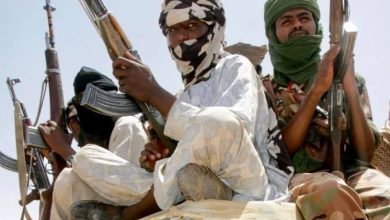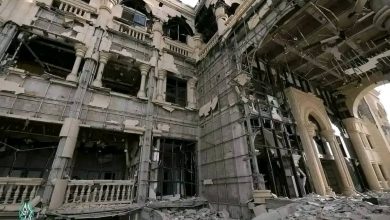The Spirit of Ramadan Eases the Suffering of Sudanese Refugees in Uganda

Sudan Events – Agencies
In the Kiryandongo refugee camp in Uganda, thousands of displaced faces carry stories of forced exile, tasting the bitterness of displacement and the hardship of refugee life. With the arrival of the holy month of Ramadan, Sudanese refugees in Uganda face overlapping tragedies but strive to keep their traditions alive despite the difficult circumstances.
Despite the harsh reality, many refugees try to carry Sudan with them through their customs and Ramadan traditions, reviving these practices in the refugee camp.
Salwa Adam Ahmed struggles to hold back tears that betray her efforts to stay strong. After a deep breath, she says, “This is not my first time as a refugee. At the age of eight, I was displaced from Nyala to Kass during the Darfur war. But I am strong and capable of endurance. Yes, I am strong.”
Salwa, a psychologist who once worked at a hospital in Gedaref, eastern Sudan, became a refugee after losing contact with her family and husband, whose fate has been unknown for two years.
Now, she works as a falafel vendor in the Sudanese refugee camp in Uganda. With no other option and extreme poverty pressing on her, she had to work, even if it meant earning as little as two dollars a day to silence her hunger and survive.
The Beginning of the Refugee Journey
Salwa recalls that her journey from Gedaref to Darfur was initially to attend the funeral of her brother, who drowned. She explains, “The Rapid Support Forces (RSF) attacked the area, entering the homes of soldiers and carrying out assassinations and looting. They stormed my husband’s family’s house, pointed a gun at my head, and demanded to know where the soldiers were. That forced me to flee.”
She tells Al Jazeera Net that after her brother’s death, her family’s deteriorating situation, and the loss of contact with her husband, she had no choice but to seek refuge. Along the way, she was robbed of her possessions and endured fear and distress until she reached Uganda.
In the refugee camp, Salwa struggled to find work and had to rely on neighbors for food for a long time. Eventually, she decided to take matters into her own hands and started selling falafel to sustain herself.
Life in the Refugee Camp: A Closer Look
The head of the Sudanese Refugee Association in Uganda, who preferred to remain anonymous, describes the challenges they face, including healthcare, food, and services. “When the influx of refugees began a year ago, there were no services at all, and the basic necessities of life were absent.”
He told Al Jazeera Net that despite appealing to humanitarian organizations, they received no response. As a result, they sought alternative solutions, digging several wells to improve access to water, though the struggle continues as they still have to purchase water for charity kitchens.
Healthcare remains a major challenge, particularly in treatment, maternal health, and public health. Chronic disease medications are scarce, prompting an urgent appeal for support in the health sector to alleviate the crisis.
He explains that Sudanese refugees share the camp with 1.8 million families from seven other nationalities. According to UNHCR statistics, the number of registered Sudanese refugee families stands at 57,434. However, they have been integrated into the broader refugee community without receiving any means of livelihood support.
Ramadan in Exile
Sadness fills Tina Abdel Qadir as she recounts experiencing Ramadan for the first time away from home, saying, “It is heartbreaking to observe Ramadan outside our country, but we tried to welcome it in the same spirit as before.”
She notes that some Sudanese refugees managed to prepare “Hulu Mur” (a traditional Sudanese Ramadan drink), making it possible for many families to taste a bit of home. Despite this, she deeply misses the Ramadan atmosphere of Sudan.
They have attempted to recreate Sudanese Ramadan traditions in the refugee camp, such as communal iftar gatherings for men, preparing traditional drinks, and performing Taraweeh prayers in open fields. However, she laments the absence of family, neighbors, and the feeling of belonging.
The Refugee Soup Kitchens
Muawiya Al-Hassan, director of the High Committee for Charity Kitchens (Tekaya) in the Sudanese refugee camp, explains that the initiative began after the World Food Program (WFP) halted its aid, leading to increased malnutrition, especially among women and children. This crisis prompted community-driven efforts to establish charity kitchens, which have now grown to 13, with the 14th opening soon.
Muawiya tells Al Jazeera Net that these kitchens currently serve between 5,000 to 6,000 Sudanese refugees, focusing on the most vulnerable groups, including young girls, widows, divorcees, and children.
However, he warns that there is no stable funding for these charity kitchens, as they rely on individual donors and local organizations. The available food supplies may only last until mid-Ramadan, after which thousands of refugees could face severe hunger.
(Source: Al Jazeera Net)



